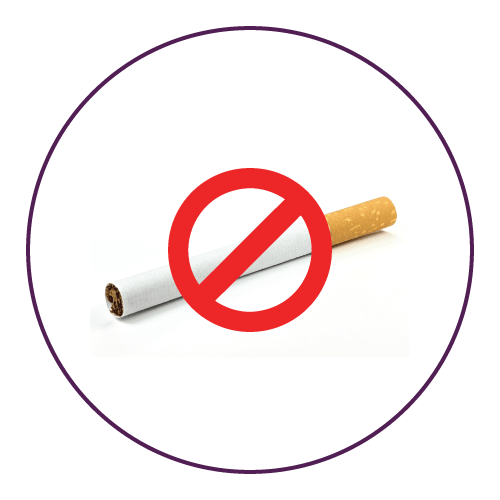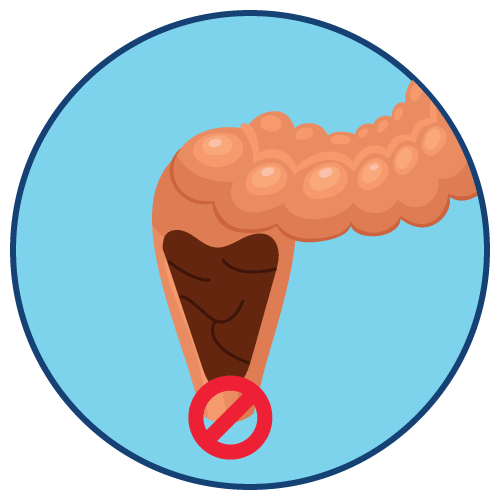Medicine details
| Image |  |
| Name | Varni |
| Dosage | Tablet |
| Generic Name | Varenicline |
| Classes |
Smoking Cessation Agent |
| Diseases |
CNS Disorder Smoking Cessation |
| Company | Monicopharma Limited |
Drug Package Details
| Strength | 0.5 mg |
| Storage Condition | |
| Origin Country | Bangladesh |
| Commercial Pack | 20 |
| Price per pack | ৳ 300.00 |
| Cost per pack | ৳ 264.00 |
| Package unit | 10 tabs strip |
| Price per unit | ৳ 15.00 |
| Cost per unit | ৳ 13.20 |
| Discount | 0 |
| Coupon | |
| Remarks |
Varenicline
Varenicline is a partial agonist of the α4β2 nicotinic acetylcholine receptor. It helps to reduce nicotine cravings and withdrawal symptoms by binding to the same receptors that nicotine binds to, but without producing the same effects.
Varenicline is used to help people quit smoking. It is usually started 1 to 2 weeks before quitting smoking and is taken for 12 weeks. In some cases, it may be taken for up to 24 weeks to help prevent relapse.
- Begin Varenicline dosing one week before the date set by the patient to stop smoking. Alternatively, the patient can begin Varenicline dosing and then quit smoking between days 8 and 35 of treatment.
- Starting week: 0.5 mg once daily on days 1-3 and 0.5 mg twice daily on days 4-7.
- Continuing Weeks: 1 mg twice daily for a total of 12 weeks.
- An additional 12 weeks of treatment is recommended for successful quitters to increase likelihood of long-term abstinence.
- Consider a gradual approach to quitting smoking with Varenicline for patients who are sure that they are not able or willing to quit abruptly. Patients should begin Varenicline dosing and reduce smoking by 50% from baseline within the first four weeks, by an additional 50% in the next four weeks, and continue reducing with the goal of reaching complete abstinence by 12 weeks. Continue treatment for an additional 12 weeks, for a total of 24 weeks.
- Severe Renal Impairment (estimated creatinine clearance less than 30 mL/min): Begin with 0.5 mg once daily and titrate to 0.5 mg twice daily. For patients with end-stage renal disease undergoing hemodialysis, a maximum of 0.5 mg daily may be given if tolerated.
- Consider dose reduction for patients who cannot tolerate adverse effects.
- Another attempt at treatment is recommended for those who fail to stop smoking or relapse when factors contributing to the failed attempt have been addressed.
- Provide patients with appropriate educational materials and counseling to support the quit attempt
Most common adverse reactions were-
- nausea
- abnormal (e.g., vivid, unusual, or strange) dreams
- constipation
- flatulence
- vomiting
- Neuropsychiatric Adverse Events: Reports from after Varenicline's release have shown that severe or significant neuropsychiatric adverse events, such as changes in mood, psychosis, hallucinations, suicidal ideation, and completed suicide, have occurred. Patients trying to stop smoking with Varenicline should be monitored for these symptoms and advised to contact a healthcare provider if they experience them.
- Seizures: Patients taking Varenicline have experienced new or worsening seizures. Varenicline should be used with caution in patients with a history of seizures or other factors that may cause seizures.
- Interaction with Alcohol: Varenicline can increase the effects of alcohol. Patients should be instructed to reduce their alcohol consumption until they know how Varenicline affects them.
- Accidental Injury: Accidents, such as traffic accidents, have been reported in patients taking Varenicline. Patients should be advised to use caution while driving or operating machinery until they know how Varenicline affects them.
- Cardiovascular Events: A meta-analysis of clinical trials found that while cardiovascular events were rare, they occurred more frequently in patients with known cardiovascular disease who were treated with Varenicline. However, all-cause and cardiovascular mortality was lower in patients treated with Varenicline. Patients should be advised to inform their healthcare providers of new or worsening cardiovascular symptoms and to seek immediate medical attention if they experience signs and symptoms of myocardial infarction (MI) or stroke.
- Somnambulism: Patients taking Varenicline have reported cases of somnambulism, which may result in harmful behavior. Patients should be instructed to stop taking Varenicline and contact their healthcare provider if they experience somnambulism.
- Angioedema and Hypersensitivity Reactions: Patients have reported infrequent life-threatening reactions, including angioedema, as a result of taking Varenicline. Patients should stop taking Varenicline and immediately seek medical care if they experience these symptoms.
- Serious Skin Reactions: Rare but potentially life-threatening skin reactions have been reported. Patients should discontinue Varenicline and seek medical attention immediately if they develop skin rash with mucosal lesions.
- Nausea: Nausea is the most common adverse reaction to Varenicline, with an incidence rate of up to 30%. Dose reduction may be helpful in managing this symptom.
Contraindication
Varenicline should not be used in patients who are allergic to varenicline or any of its components.
None known.
None known.





 Bangla
Bangla English
English